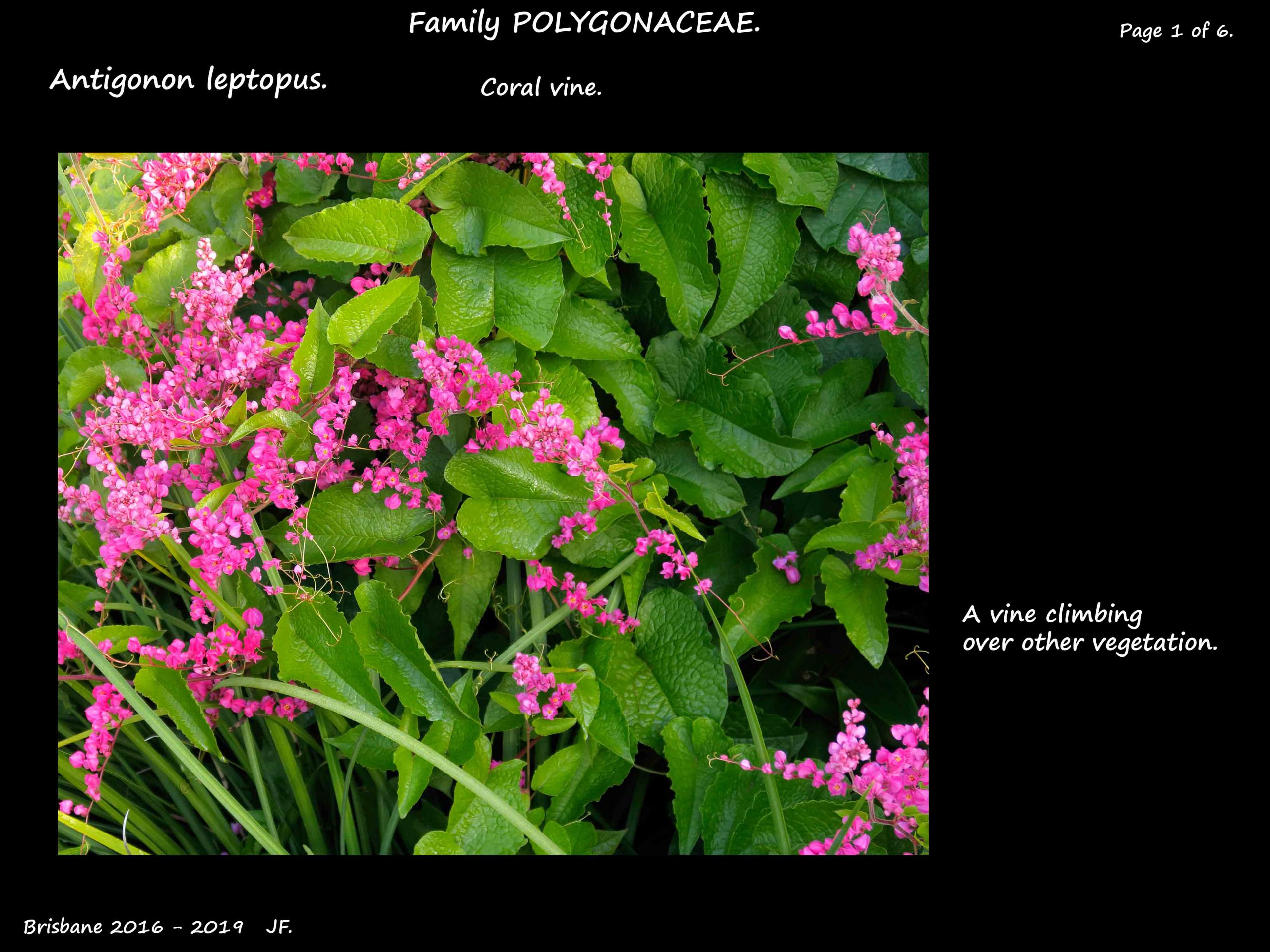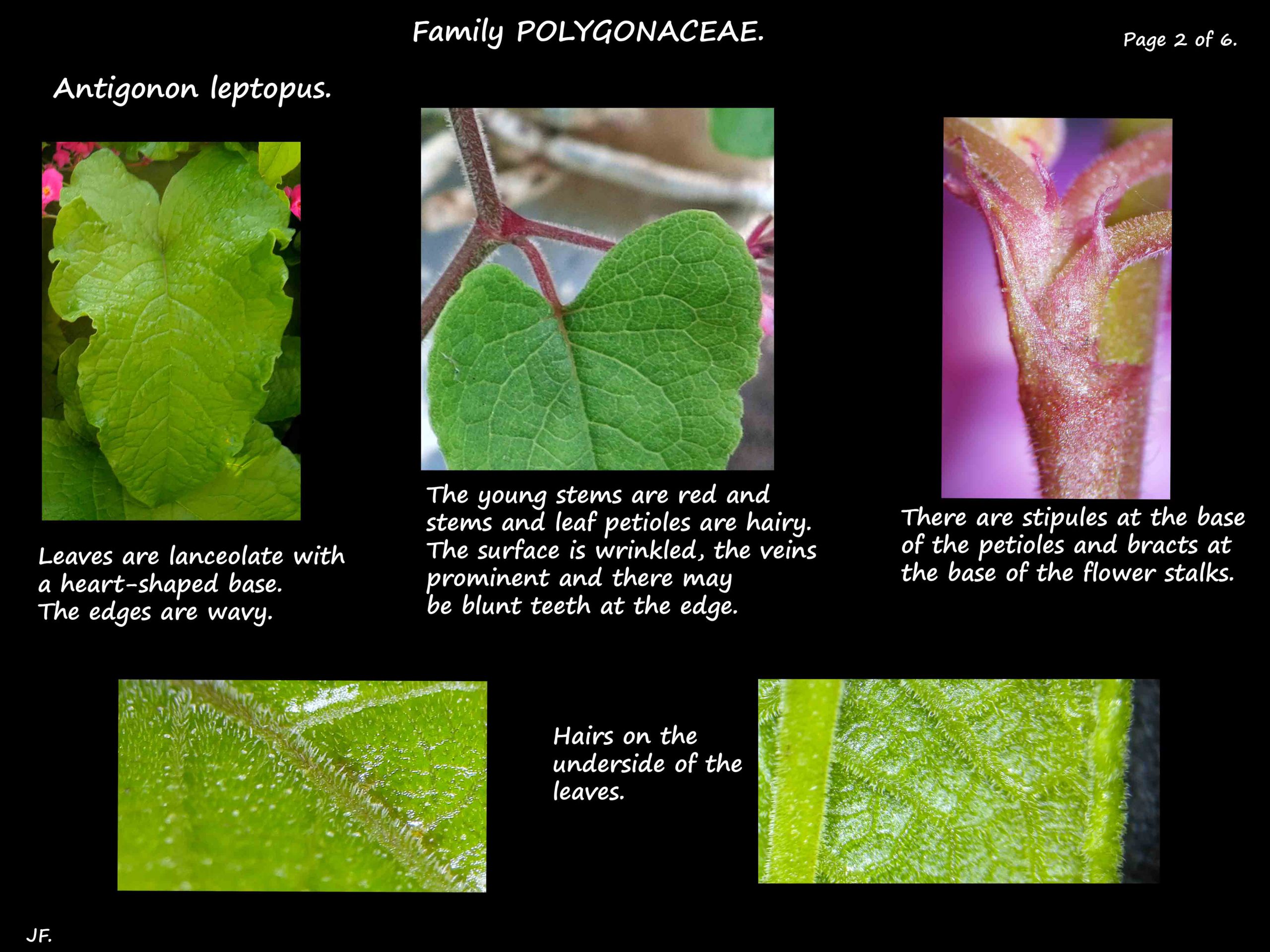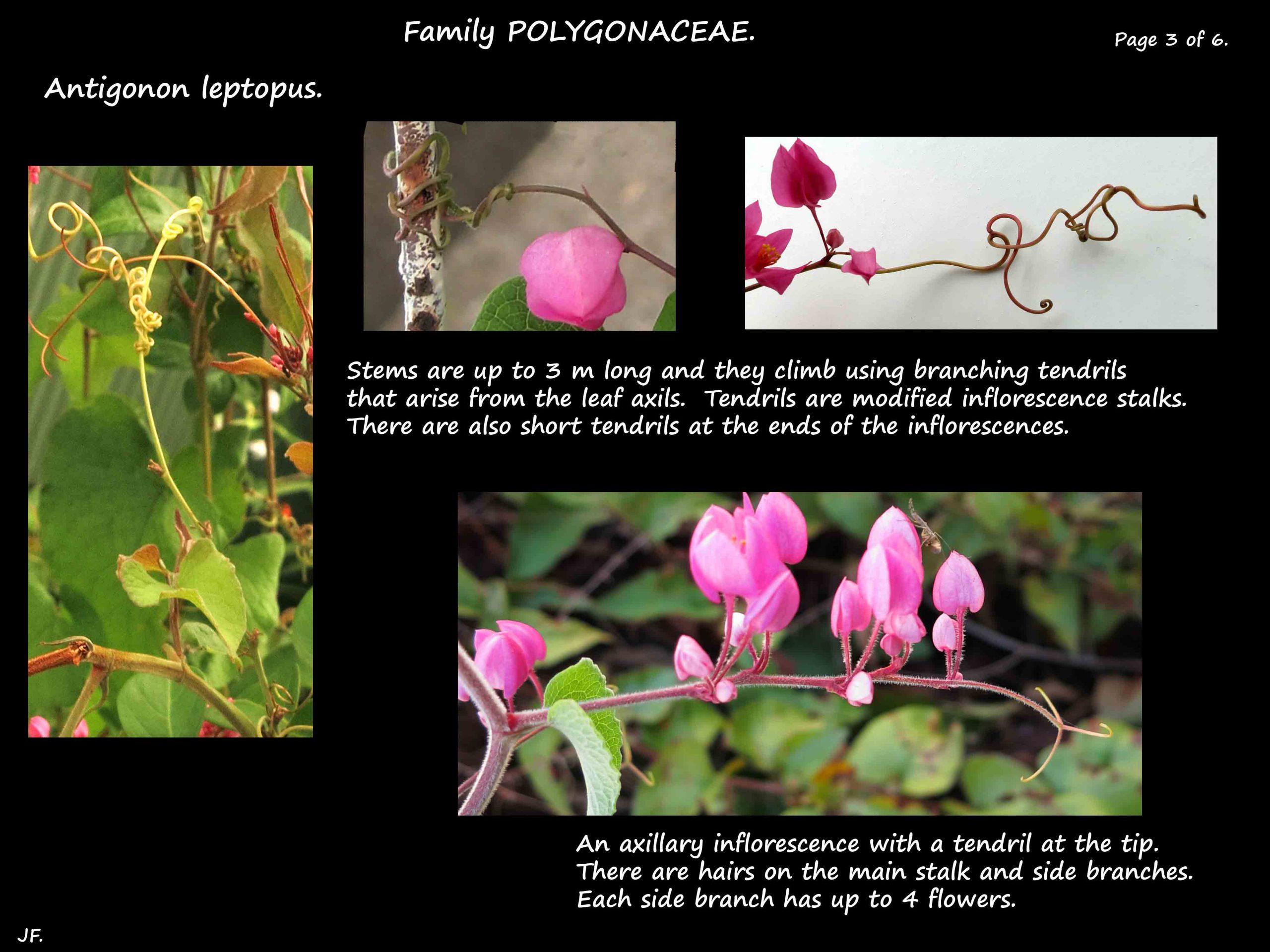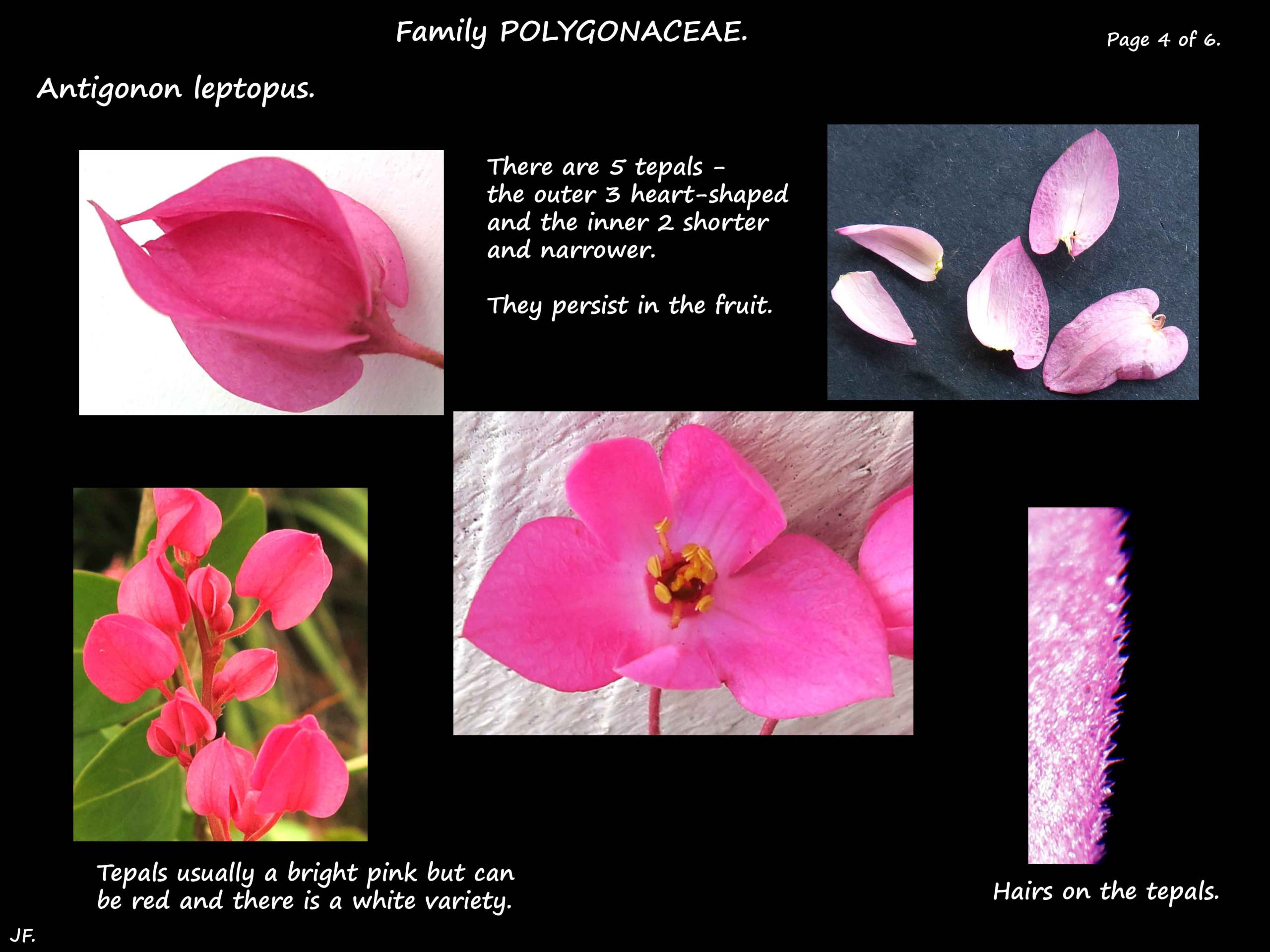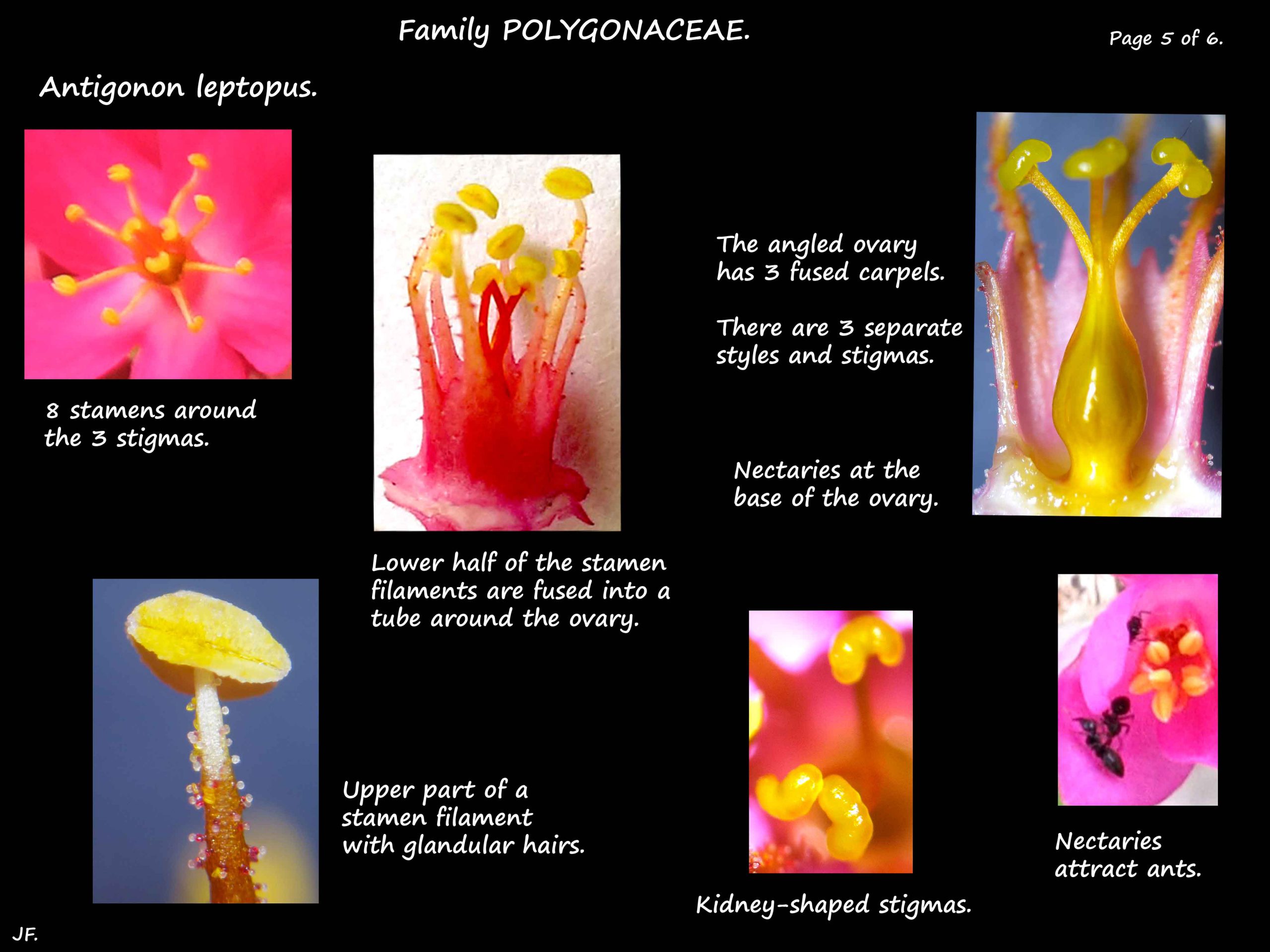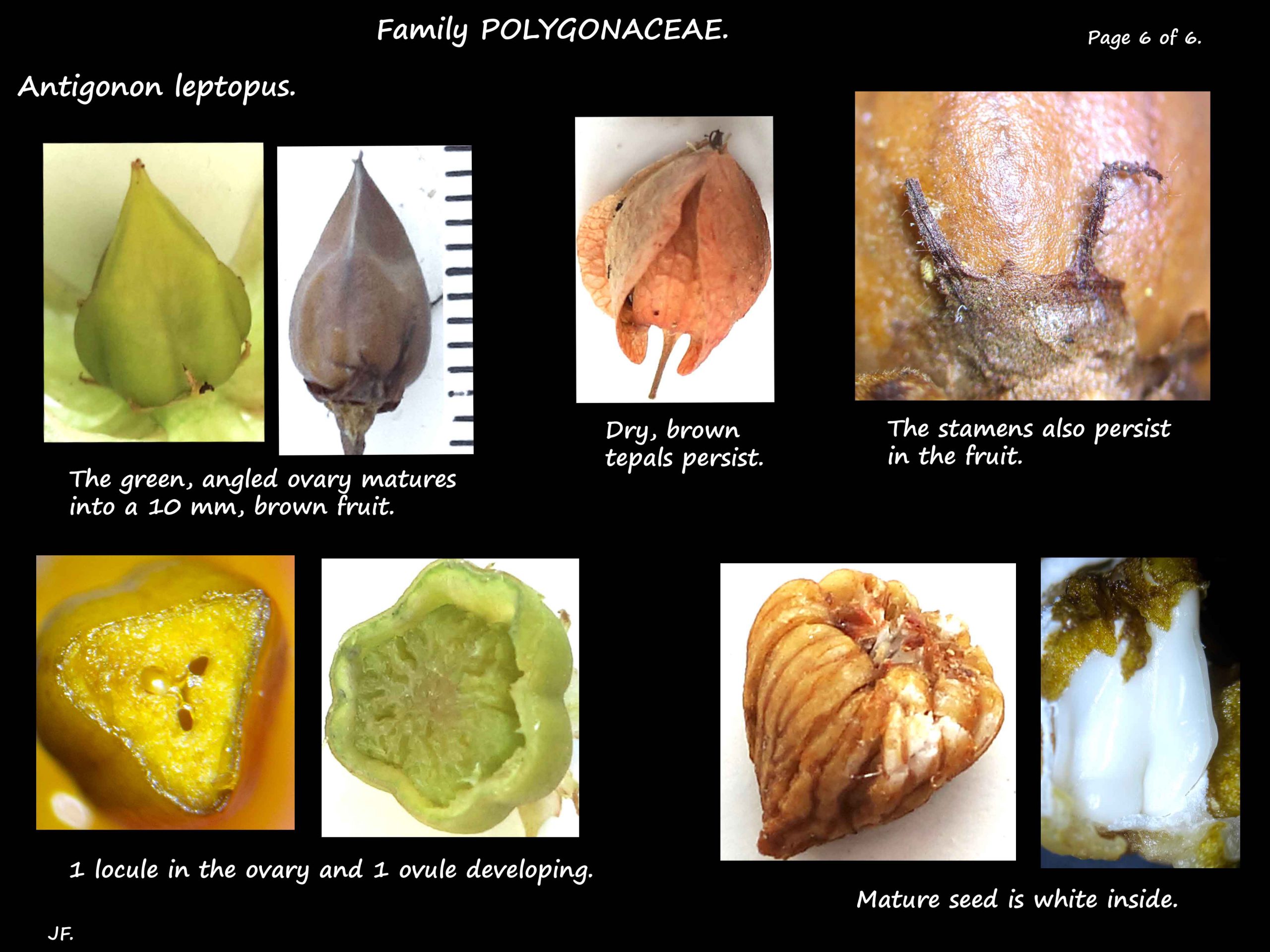Antigonon leptopus – Coral vine.
Family Polygonaceae.
The Coral vine, is a perennial vine sometimes used as a garden plant but
considered an invasive species in some places.
It is a rapidly growing vine up to 10 m high that forms tubers on the roots.
Young stems are a red-brown or green and older ones are brown and woody.
Stems are angled in cross section and smooth or with varying amounts of hair.
It climbs, often over other plants, using branching tendrils that grow from the leaf axils.
Leaves are alternately arranged and a light to dark green.
The lower leaves are larger and wider than higher ones.
The petioles are up to 5 cm long and the arrowhead-shaped blades up to about 7 cm long.
There may be small wings on the petioles.
The bases of the petioles may form a small sheath on the stem.
Leaves are undivided with wavy edges that are smooth or have blunt teeth.
The surface is wrinkled and the veins are prominent.
There may or may not be hairs especially on the veins on the lower surface.
Inflorescences, from the leaf axils, are usually branched and have a short tendril at the tip.
The stalks are hairy and bracts are present at their bases.
The inflorescence branches have up to 4 flowers on short stalks.
The perianth consists of 5 segments or tepals typically a bright pink but sometimes red.
The outer 3 tepals are heart-shaped and up to 10 mm long and 6 mm wide.
The inner 2 are narrowly triangular and smaller.
There are 8 (7-9) stamens with dorsifixed anthers that open inwards.
There are 3 joined carpels in the superior ovary and 1 locule.
There are 3 styles and stigmas.
Below the ovary is a nectary.
The fruit is a shiny achene or nut, up to 12 mm long.
It is usually enclosed in the persistent tepals that become stiff, brown and dry.
Antigonon leptopus ‘alba’ is the white variety.
J.F.
